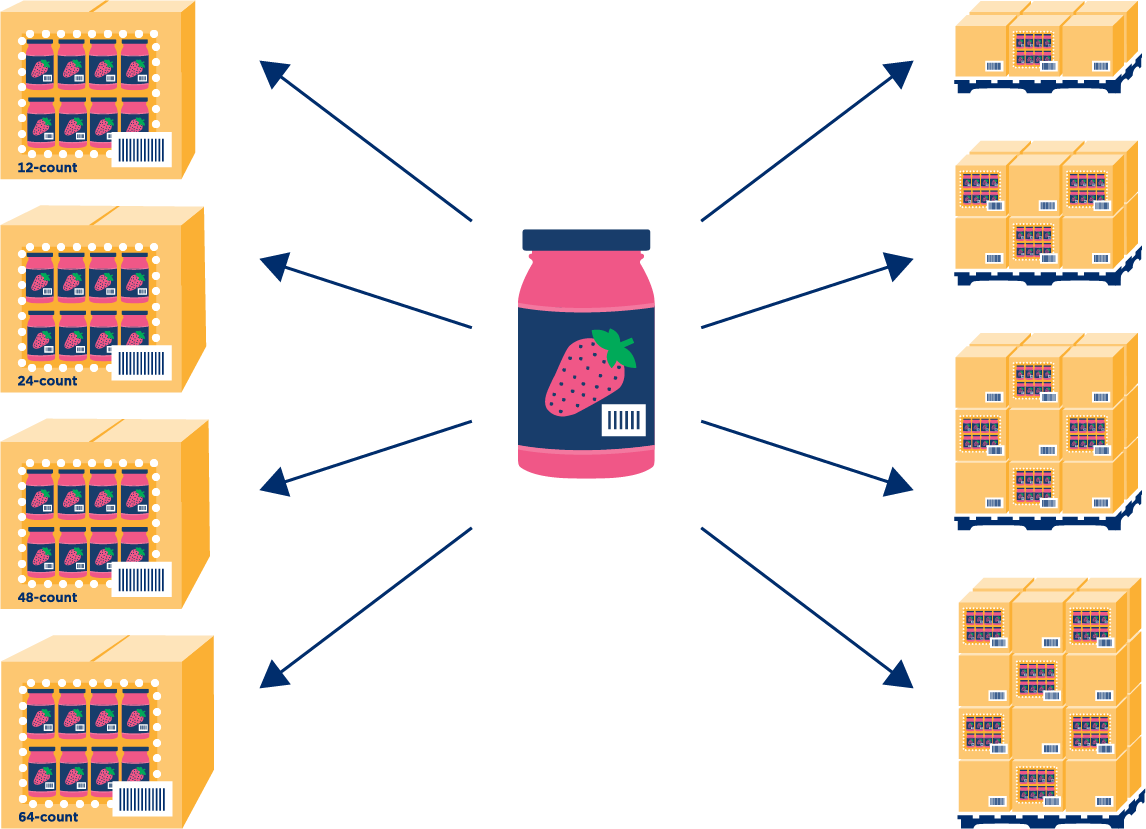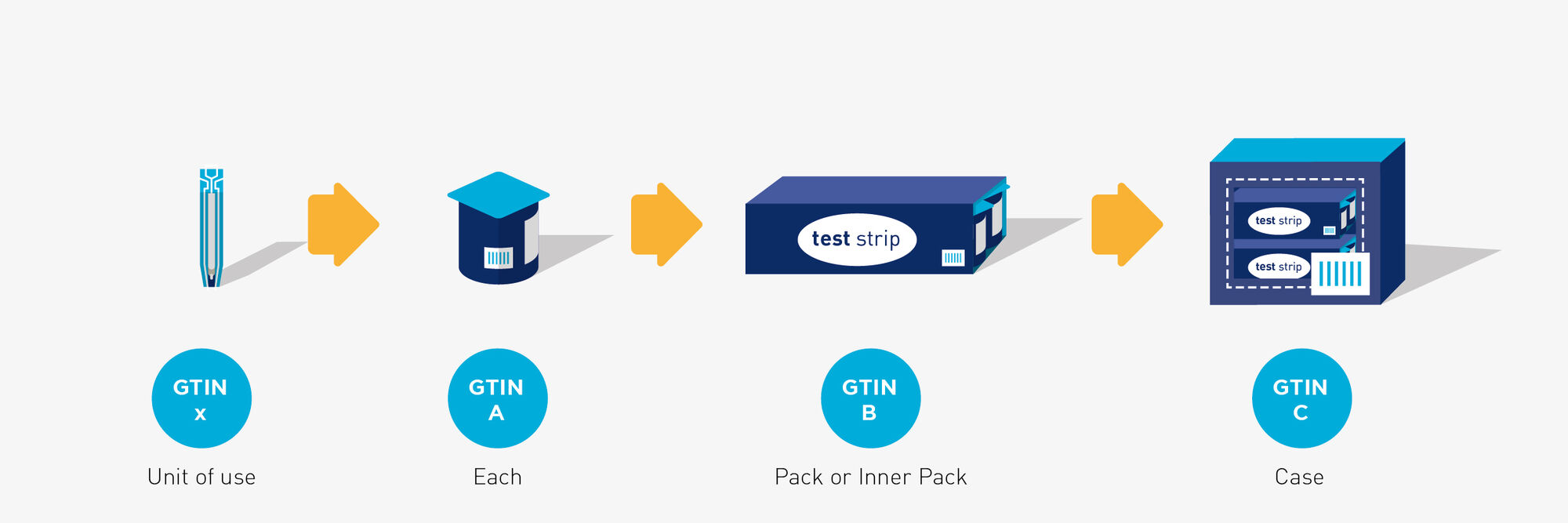Method 1
One option is is to assign different GTIN-13s at every packaging level.

Remember, when capturing a GTIN-13 in a GS1-128 or ITF-14 barcode, you’ll need to include a leading zero as GTIN is a 14-digit field in these barcodes.
| GTIN-8 | 0 | 0 | 0 | 0 | 0 | 0 | N | N | N | N | N | N | N | N |
| GTIN-12 | 0 | 0 | N | N | N | N | N | N | N | N | N | N | N | N |
| GTIN-13 | 0 | N | N | N | N | N | N | N | N | N | N | N | N | N |
| GTIN-14 | N | N | N | N | N | N | N | N | N | N | N | N | N | N |
If the product is to be supplied into retail, a GTIN-13 must be assigned to the retail pack and captured in an EAN-13 barcode.
Method 2
Alternatively, you can create GTIN-14s .
Start by assigning a GTIN-13 for the each or consumer unit, then allocate GTIN-14s created from that GTIN-13 to each additional packaging level.
In the illustration below GTIN A would be the GTIN-13, and GTINs B, C and X would be allocated GTIN-14s:

Using this method would mean that an organisation would not go through their allocation of GTIN-13s as quickly.
As a GS1 UK member, you are able to access all your GTINs in the Numberbank. It is quick and easy to allocate GTIN-13s and GTIN-14s to your products and your cases whenever you need them.
The article below shows you the two different methods to identify different packaging levels in My Numberbank.
Common mistake
Some organisations are under the impression that in order to meet regulatory requirements they have to use GTIN-14s to identify their different packaging levels. This is incorrect – the method chosen is completely up to the GTIN allocator.